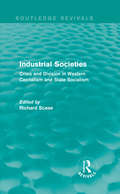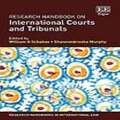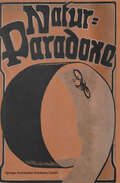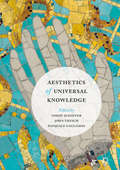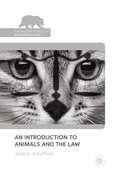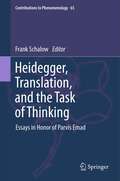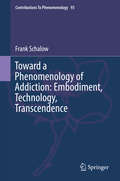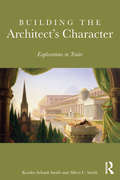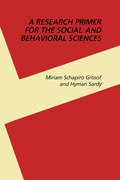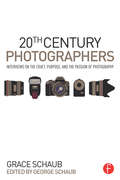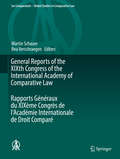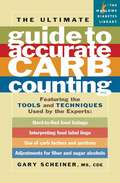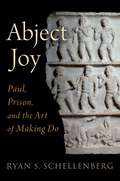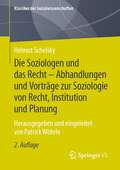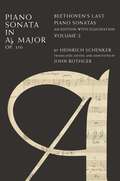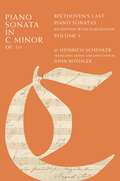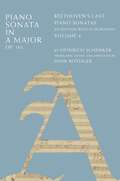- Table View
- List View
Industrial Societies: Crisis and Division in Western Capatalism (Routledge Revivals)
by Richard ScaseThis book, first published in 1989, addresses an issue that stood at the centre of sociological concern – the changing character of industrial societies. The authors examine the nature of the industrialization process, in terms of its impact upon and development within both state socialist and capitalist societies. Is ‘industrialism’ a constant phenomenon within both kinds of society, or are distinctive differences apparent? In the 1960s, it did seem that economic growth and technological change were producing similarities in social structure between the different socio-political systems; it now appears however that the crisis that have developed during the 1980s how illustrated their contrasts. Through the analysis of this trend in the West, in Eastern Europe and in China the authors clarify central issues for the student of sociology: The changing character of national states, organized labour, stratification systems and class relationships Processes of social integration, cohesion and control The extent to which dominant groups are able to sustain social and economic privileges in different socio-economic systems The changing pattern of work and employment relationships The nature of class, gender and ethnicity as sources of socio-economic division
Industrial Societies: Crisis and Division in Western Capatalism (Routledge Revivals)
by Richard ScaseThis book, first published in 1989, addresses an issue that stood at the centre of sociological concern – the changing character of industrial societies. The authors examine the nature of the industrialization process, in terms of its impact upon and development within both state socialist and capitalist societies. Is ‘industrialism’ a constant phenomenon within both kinds of society, or are distinctive differences apparent? In the 1960s, it did seem that economic growth and technological change were producing similarities in social structure between the different socio-political systems; it now appears however that the crisis that have developed during the 1980s how illustrated their contrasts. Through the analysis of this trend in the West, in Eastern Europe and in China the authors clarify central issues for the student of sociology: The changing character of national states, organized labour, stratification systems and class relationships Processes of social integration, cohesion and control The extent to which dominant groups are able to sustain social and economic privileges in different socio-economic systems The changing pattern of work and employment relationships The nature of class, gender and ethnicity as sources of socio-economic division
Research Handbook on International Courts and Tribunals (Research Handbooks in International Law series)
by William A. Schabas Shannonbrooke MurphySince the establishment of the Permanent Court of Arbitration for international dispute resolution in 1899, the number of international courts and tribunals has multiplied and the reach of their jurisdiction has steadily expanded. By providing a synthetic overview and critical analysis of these developments from multiple perspectives, this Research Handbook both contextualizes and stimulates future research and practice in this rapidly developing field. Made up of specially commissioned chapters by leading and emerging scholars, the book takes a thematic and interpretive, system-wide and inter-jurisdictional comparative approach to the main issues, debates and controversies related to the growth of international courts and tribunals. Its review of influential international judgements traverses the areas of international peace and security law, international human rights law, international criminal law and international economic law, while also including critical reflection by practitioners. This nuanced review of the latest thinking on scholarly debates and controversies in international courts and tribunals will be both a key resource for academic researchers and a concise introduction to the subject for post-graduate students. Its chapters also contain topics of practical relevance to lawyers and international decision-makers.
Natur-Paradoxe: Ein Buch für die Jugend zur Erklärung von Erscheinungen, die mit der täglichen Erfahrung im Widerspruch zu stehen scheinen
by C. SchäfferDieser Buchtitel ist Teil des Digitalisierungsprojekts Springer Book Archives mit Publikationen, die seit den Anfängen des Verlags von 1842 erschienen sind. Der Verlag stellt mit diesem Archiv Quellen für die historische wie auch die disziplingeschichtliche Forschung zur Verfügung, die jeweils im historischen Kontext betrachtet werden müssen. Dieser Titel erschien in der Zeit vor 1945 und wird daher in seiner zeittypischen politisch-ideologischen Ausrichtung vom Verlag nicht beworben.
Aesthetics of Universal Knowledge
by Simon Schaffer John Tresch Pasquale GagliardiBorn out of a major international dialogue held at the Fondazione Giorgio Cini in Venice, Italy, this collection of essays presents innovative and provocative arguments about the claims of universal knowledge schemes and the different aesthetic and material forms in which such claims have been made and executed. Contributors take a close look at everything from religious pilgrimages, museums, and maps of the world, to search engines and automated GPS.Current obsessions in information technology, communications theory, and digital culture often concern the value and possibility of a grand accumulation of universally accessible forms of knowledge: total libraries, open data bases, ubiquitous computing, and ‘smart’ technologies. These obsessions have important social and philosophical origins, and they raise profound questions about the very nature of knowledge and its organization. This volume’s contributors draw on the histories of maps and of encyclopedias, worldviews and visionary collections, to make sense of the crucial relation between the way the world is known and how it might be displayed and transformed.
Aesthetics of Universal Knowledge
by Simon Schaffer John Tresch Pasquale GagliardiBorn out of a major international dialogue held at the Fondazione Giorgio Cini in Venice, Italy, this collection of essays presents innovative and provocative arguments about the claims of universal knowledge schemes and the different aesthetic and material forms in which such claims have been made and executed. Contributors take a close look at everything from religious pilgrimages, museums, and maps of the world, to search engines and automated GPS.Current obsessions in information technology, communications theory, and digital culture often concern the value and possibility of a grand accumulation of universally accessible forms of knowledge: total libraries, open data bases, ubiquitous computing, and ‘smart’ technologies. These obsessions have important social and philosophical origins, and they raise profound questions about the very nature of knowledge and its organization. This volume’s contributors draw on the histories of maps and of encyclopedias, worldviews and visionary collections, to make sense of the crucial relation between the way the world is known and how it might be displayed and transformed.
An Introduction to Animals and the Law (The Palgrave Macmillan Animal Ethics Series)
by Joan E. SchaffnerThis exploration of the newly emerging, diverse, and controversial area of animal lawpresents a basic survey of the laws designed to protect animals, analyzing and critiquing them, and proposing a future where the legal regime properly recognizes and protects the inherent worth of all animals.
Heidegger, Translation, and the Task of Thinking: Essays in Honor of Parvis Emad (Contributions to Phenomenology #65)
by F. SchalowNumerous volumes have been written on the philosophy of Martin Heidegger, and new translations of his writings appear on a regular basis. Up to now, however, no book has addressed the connections between Heidegger's thought and the hermeneutic methodology involved in translating his works - or any other text. Gathering essays by internationally recognized scholars, this volume examines the specific synergy that holds between Heidegger's thinking and the distinctive endeavor of translation. Heidegger, Translation, and the Task of Thinking: Essays in Honor of Parvis Emad offers scholars and students alike a rare journey into the insights and intricacies of one of the greatest philosophers of the twentieth century. The book also pays homage to Parvis Emad, Professor Emeritus of Philosophy at De Paul University, founder of the journal Heidegger Studies and a renowned translator of Heidegger’s writings.Heidegger, Translation, and the Task of Thinking: Essays in Honor of Parvis Emad provides a uniquely focused perspective on Heidegger's thought, and delves into the strategies and controversies that attend all attempts to translate his most complex and challenging texts, including his seminal works Contributions to Philosophy and Mindfulness. Accordingly, this book will be of great interest and benefit to anyone working in the fields of phenomenology, hermeneutics, or Heidegger studies.
Toward a Phenomenology of Addiction: Embodiment, Technology, Transcendence (Contributions To Phenomenology #93)
by Frank SchalowThis book addresses an epidemic that has developed on a global scale, and, which under the heading of “addiction,” presents a new narrative about the travails of the human predicament. The book introduces phenomenological motifs, such as desire, embodiment, and temporality, to uncover the existential roots of addiction, and develops Martin Heidegger’s insights into technology to uncover the challenge of becoming a self within the impulsiveness and depersonalization of our digital age. By charting a new path of philosophical inquiry, the book allows a pervasive, cultural phenomenon, ordinarily reserved to psychology, to speak as a referendum about the danger which technology poses to us on a daily basis. In this regard, addiction ceases to be merely a clinical malady, and instead becomes a “signpost” to exposing a hidden danger posed by the assimilation of our culture within a technological framework.
Building the Architect's Character: Explorations in Traits
by Kendra Schank Smith Albert C. SmithAn understanding of architects’ character traits can offer important insights into how they design buildings. These traits include leadership skills necessary to coordinate a team, honest and ethical behavior, being well educated and possessing a life-long love of learning, flexibility, resourcefulness, and visionary and strategic thinking. Characteristics such as these describe a successful person. Architects also possess these traits, but they have additional skills specifically valuable for the profession. These will include the ability to question the use of digital media, new materials, processes, and methods to convey meaning in architectural form. Although not exhaustive, a discussion of such subjects as defining, imaging, persuading, and fabricating will reveal representational meaning useful for the development of an understanding of architects’ character. Through the analogies and metaphors found in Greek myth, the book describes the elusive, hard-to-define characteristics of architects to engage the dilemmas of a changing architectural landscape. Building the Architect’s Character: Explorations in Traits examines traditional and archetypal characteristics of the successful architect to ask if they remain relevant today.
Building the Architect's Character: Explorations in Traits
by Kendra Schank Smith Albert C. SmithAn understanding of architects’ character traits can offer important insights into how they design buildings. These traits include leadership skills necessary to coordinate a team, honest and ethical behavior, being well educated and possessing a life-long love of learning, flexibility, resourcefulness, and visionary and strategic thinking. Characteristics such as these describe a successful person. Architects also possess these traits, but they have additional skills specifically valuable for the profession. These will include the ability to question the use of digital media, new materials, processes, and methods to convey meaning in architectural form. Although not exhaustive, a discussion of such subjects as defining, imaging, persuading, and fabricating will reveal representational meaning useful for the development of an understanding of architects’ character. Through the analogies and metaphors found in Greek myth, the book describes the elusive, hard-to-define characteristics of architects to engage the dilemmas of a changing architectural landscape. Building the Architect’s Character: Explorations in Traits examines traditional and archetypal characteristics of the successful architect to ask if they remain relevant today.
A Research Primer for the Social and Behavioral Sciences
by Miriam Schapiro Grosof Hyman SardyA Research Primer for the Social and Behavioral Sciences provides an introductory but comprehensive overview of the research process that primarily concerns human subjects.This book discusses the methods of acquiring knowledge, importance of a well-chosen problem, review of the literature, and relationship between theory-building and hypothesis-testing. The common sources of invalidity in practice, non-experimental research types, Stevens' classification of scales, and estimation based on probabilistic sampling are also elaborated. This text likewise covers the role of computer in research, techniques for analysis of data, univariate and bivariate statistics, and assumptions underlying analysis of variance. Other topics include the canonical correlation analysis, non-parametric analysis of variance, deterministic problem analysis techniques, and common errors in presentation of findings.This publication is intended for novice investigators in the broad category of social and behavioral sciences.
20th Century Photographers: Interviews on the Craft, Purpose, and the Passion of Photography
by Grace SchaubThis book is a compilation of interviews and essays that cover a broad range of photographers and photographic disciplines. Each photographer profiled made a living by concentrating on a specific aspect of the craft, but in doing so transcended their livelihood to become recognized for more than the type of images they created. Each had a distinct "style," creative approach, dedication to the craft, point of view about themselves and the world. These interviews were conducted during a seminal period in the shift from film to digital and from print reproduction to global distribution on the Internet. Just like their photographs continue to inspire today, now these pros’ words can live on as an invaluable reference for the photographers of the future. The truth and wisdom in this collection transcend time and technology.
20th Century Photographers: Interviews on the Craft, Purpose, and the Passion of Photography
by Grace SchaubThis book is a compilation of interviews and essays that cover a broad range of photographers and photographic disciplines. Each photographer profiled made a living by concentrating on a specific aspect of the craft, but in doing so transcended their livelihood to become recognized for more than the type of images they created. Each had a distinct "style," creative approach, dedication to the craft, point of view about themselves and the world. These interviews were conducted during a seminal period in the shift from film to digital and from print reproduction to global distribution on the Internet. Just like their photographs continue to inspire today, now these pros’ words can live on as an invaluable reference for the photographers of the future. The truth and wisdom in this collection transcend time and technology.
General Reports of the XIXth Congress of the International Academy of Comparative Law Rapports Généraux du XIXème Congrès de l'Académie Internationale de Droit Comparé (Ius Comparatum - Global Studies in Comparative Law #24)
by Martin Schauer Bea VerschraegenThis book deals with convergences of legal doctrine despite jurisdictional, cultural, and political barriers, and of divergences due to such barriers, examining topics that are of vital importance to contemporary legal scholars. Written by leading scholars from more than twenty countries, its thirty-two chapters present a comparative analysis of cutting-edge legal topics of the 21st century. While each of the countries covered stands alone as a sovereign state, in a technologically advanced world their disparate systems nonetheless show comparable strategies in dealing with complex legal issues. The book is a critical addition to the library of any scholar hoping to keep abreast of the major trends in contemporary law. It covers a vast area of topics that are dealt with from a comparative point of view and represents the current state of law in each area.
Technology for the School Librarian: Theory and Practice
by William O. ScheerenThe world of the school librarian has changed significantly over the past ten years with the proliferation of technology into all phases of education; this book attempts to address these issues.What does a school librarian need to know about technology? Technology for the School Librarian: Theory and Practice is an introduction to all aspects of technology in the school library and provides a starting point for further study of this wide-ranging—and critically important—field. The only book that addresses both the theoretical and the practical aspects of the subject, Technology for the School Librarian is organized into 13 chapters describing the most vital topics in technology for school librarians. Within these chapters, school librarians (whether practicing or prospective) will be introduced to the practical aspects of technology in the school library and presented with a theoretical framework that will allow them to continue their research and learning. Case studies facilitate understanding, as do the study questions included with each chapter.
The Ultimate Guide to Accurate Carb Counting: Featuring the Tools and Techniques Used by the Experts (Marlowe Diabetes Library)
by Gary ScheinerThe most comprehensive on accurate carb counting-a must-have for the more than 20 million people with diabetes, the 42 million with prediabetes, as well as millions of other carb-conscious eaters.Whether you're following a diet plan that requires carb-counting, you have diabetes, or simply because you are conscious of the quantity of carbs you consume, The Ultimate Guide to Accurate Carb Counting is the all-in-one resource for practically and effectively managing your carb intake. Certified diabetes educator, type 1 diabetic, and Think Like a Pancreas author Gary Scheiner focuses on carb counting in a real-world context, and his explanations and advice-in addition to being complete and thoroughly accurate-are geared towards the most common foods and eating habits. The Ultimate Guide to Accurate Carb Counting tells you everything you need to accurately keep track of your carb intake, including: The basic rationale for and the theory behind carb-counting, as well as explanations of simple to advanced techniques. There is also a comprehensive listing of exchanges, carb factors, and glycemic index values, as well as the carb and fiber values for 2,500 foods.
The Ultimate Guide to Accurate Carb Counting: Featuring the Tools and Techniques Used by the Experts (Marlowe Diabetes Library)
by Gary ScheinerThe most comprehensive on accurate carb counting-a must-have for the more than 20 million people with diabetes, the 42 million with prediabetes, as well as millions of other carb-conscious eaters. Whether you're following a diet plan that requires carb-counting, you have diabetes, or simply because you are conscious of the quantity of carbs you consume, The Ultimate Guide to Accurate Carb Counting is the all-in-one resource for practically and effectively managing your carb intake. Certified diabetes educator, type 1 diabetic, and Think Like a Pancreas author Gary Scheiner focuses on carb counting in a real-world context, and his explanations and advice-in addition to being complete and thoroughly accurate-are geared towards the most common foods and eating habits. The Ultimate Guide to Accurate Carb Counting tells you everything you need to accurately keep track of your carb intake, including: The basic rationale for and the theory behind carb-counting, as well as explanations of simple to advanced techniques. There is also a comprehensive listing of exchanges, carb factors, and glycemic index values, as well as the carb and fiber values for 2,500 foods.
Abject Joy: Paul, Prison, and the Art of Making Do
by Ryan S. SchellenbergNo extant text gives so vivid a glimpse into the experience of an ancient prisoner as Paul's letter to the Philippians. As a letter from prison, however, it is not what one would expect. For although it is true that Paul, like some other ancient prisoners, speaks in Philippians of his yearning for death, what he expresses most conspicuously is contentment and even joy. Setting aside pious banalities that contrast true joy with happiness, and leaving behind too heroic depictions that take their cue from Acts, Abject Joy offers a reading of Paul's letter as both a means and an artifact of his provisional attempt to make do. By outlining the uses of punitive custody in the administration of Rome's eastern provinces and describing the prison's complex place in the social and moral imagination of the Greek and Roman world, Ryan Schellenberg provides a richly drawn account of Paul's nonelite social context, where bodies and their affects were shaped by acute contingency and habitual susceptibility to violent subjugation. Informed by recent work in the history of emotions, and with comparison to modern prison writing and ethnography provoking new questions and insights, Schellenberg describes Paul's letter as an affective technology, wielded at once on Paul himself and on his addressees, that works to strengthen his grasp on the very joy he names. Abject Joy: Paul, Prison, and the Art of Making Do by Ryan S. Schellenberg is a social history of prison in the Greek and Roman world that takes Paul's letter to the Philippians as its focal instance--or, to put it the other way around, a study of Paul's letter to the Philippians that takes the reality of prison as its starting point. Examining ancient perceptions of confinement, and placing this ancient evidence in dialogue with modern prison writing and ethnography, it describes Paul's urgent and unexpectedly joyful letter as a witness to the perplexing art of survival under constraint.
Abject Joy: Paul, Prison, and the Art of Making Do
by Ryan S. SchellenbergNo extant text gives so vivid a glimpse into the experience of an ancient prisoner as Paul's letter to the Philippians. As a letter from prison, however, it is not what one would expect. For although it is true that Paul, like some other ancient prisoners, speaks in Philippians of his yearning for death, what he expresses most conspicuously is contentment and even joy. Setting aside pious banalities that contrast true joy with happiness, and leaving behind too heroic depictions that take their cue from Acts, Abject Joy offers a reading of Paul's letter as both a means and an artifact of his provisional attempt to make do. By outlining the uses of punitive custody in the administration of Rome's eastern provinces and describing the prison's complex place in the social and moral imagination of the Greek and Roman world, Ryan Schellenberg provides a richly drawn account of Paul's nonelite social context, where bodies and their affects were shaped by acute contingency and habitual susceptibility to violent subjugation. Informed by recent work in the history of emotions, and with comparison to modern prison writing and ethnography provoking new questions and insights, Schellenberg describes Paul's letter as an affective technology, wielded at once on Paul himself and on his addressees, that works to strengthen his grasp on the very joy he names. Abject Joy: Paul, Prison, and the Art of Making Do by Ryan S. Schellenberg is a social history of prison in the Greek and Roman world that takes Paul's letter to the Philippians as its focal instance--or, to put it the other way around, a study of Paul's letter to the Philippians that takes the reality of prison as its starting point. Examining ancient perceptions of confinement, and placing this ancient evidence in dialogue with modern prison writing and ethnography, it describes Paul's urgent and unexpectedly joyful letter as a witness to the perplexing art of survival under constraint.
Die Soziologen und das Recht - Abhandlungen und Vorträge zur Soziologie von Recht, Institution und Planung: Herausgegeben und eingeleitet von Patrick Wöhrle (Klassiker der Sozialwissenschaften)
by Helmut SchelskyDas Buch enthält die wichtigsten Beiträge von Helmut Schelskys wissenschaftlichem Spätwerk, darunter dessen jüngst wieder verstärkt diskutierte Rechtssoziologie. Die neu verfasste Einleitung des Herausgebers erläutert den zeitgeschichtlichen und biographischen Entstehungskontext dieser Beiträge. Zudem bietet sie Anhaltspunkte für eine kritische Gesamtwürdigung insbesondere der rechtssoziologischen, aber auch der institutionentheoretischen und planungskritischen Schwerpunkte des Werks.
Piano Sonata in Ab, Op. 110: Beethoven's Last Piano Sonatas, An Edition with Elucidation, Volume 2
by Heinrich SchenkerHeinrich Schenker ranks among the most important figures in the development of western music theory in the twentieth century. His approach to the analysis of music permeates nearly every aspect of the field and continues to this day to be a topic of great interest among music theorists, historians, composers and performers. In his four volume work, Die letzen Sonaten von Beethoven: Kritische Ausgabe mit Einführung und Erläuterung (The Last Piano Sonatas by Beethoven: Critical edition with Introduction and Commentary) Schenker presented editions of Beethoven's Opp. 109, 110, 111 and 101 that were, at the time, unprecedented in their faithfulness to such authoritative sources as Beethoven's autograph manuscripts. He included a movement-by-movement and section-by-section discussion of form and content that grew increasingly penetrating from one volume to the next as the musical theory for which he is now known was developed, alongside inspired and detailed suggestions for the performance of each section of each work. In Beethoven's Last Piano Sonatas: An Edition, with Elucidation, noted Schenker scholar John Rothgeb presents the first English language edition and translation of these important works. Rothgeb builds upon Schenker's text, adding explanations of certain points in the commentary, references to corrections and other remarks entered by Schenker in his personal copies of the volumes, and graphic presentations of several passages (a practice that became standard in Schenker's own analytical work later in his career). Making these seminal works accessible to English speaking scholars and students for the first time, Beethoven's Last Piano Sonatas is an essential reference for music theorists, historians, performers, and composers alike.
Piano Sonata in C Minor, Op. 111: Beethoven's Last Piano Sonatas, An Edition with Elucidation, Volume 3
by Heinrich SchenkerHeinrich Schenker ranks among the most important figures in the development of western music theory in the twentieth century. His approach to the analysis of music permeates nearly every aspect of the field and continues to this day to be a topic of great interest among music theorists, historians, composers and performers. In his four volume work, Die letzen Sonaten von Beethoven: Kritische Ausgabe mit Einführung und Erläuterung (The Last Piano Sonatas by Beethoven: Critical edition with Introduction and Commentary) Schenker presented editions of Beethoven's Opp. 109, 110, 111 and 101 that were, at the time, unprecedented in their faithfulness to such authoritative sources as Beethoven's autograph manuscripts. He included a movement-by-movement and section-by-section discussion of form and content that grew increasingly penetrating from one volume to the next as the musical theory for which he is now known was developed, alongside inspired and detailed suggestions for the performance of each section of each work. In Beethoven's Last Piano Sonatas: An Edition, with Elucidation, noted Schenker scholar John Rothgeb presents the first English language edition and translation of these important works. Rothgeb builds upon Schenker's text, adding explanations of certain points in the commentary, references to corrections and other remarks entered by Schenker in his personal copies of the volumes, and graphic presentations of several passages (a practice that became standard in Schenker's own analytical work later in his career). Making these seminal works accessible to English speaking scholars and students for the first time, Beethoven's Last Piano Sonatas is an essential reference for music theorists, historians, performers, and composers alike.
Piano Sonata in E Major, Op. 109: Beethoven's Last Piano Sonatas, An Edition with Elucidation, Volume 1
by Heinrich SchenkerHeinrich Schenker ranks among the most important figures in the development of western music theory in the twentieth century. His approach to the analysis of music permeates nearly every aspect of the field and continues to this day to be a topic of great interest among music theorists, historians, composers and performers. In his four volume work, Die letzen Sonaten von Beethoven: Kritische Ausgabe mit Einführung und Erläuterung (The Last Piano Sonatas by Beethoven: Critical edition with Introduction and Commentary) Schenker presented editions of Beethoven's Opp. 109, 110, 111 and 101 that were, at the time, unprecedented in their faithfulness to such authoritative sources as Beethoven's autograph manuscripts. He included a movement-by-movement and section-by-section discussion of form and content that grew increasingly penetrating from one volume to the next as the musical theory for which he is now known was developed, alongside inspired and detailed suggestions for the performance of each section of each work. In Beethoven's Last Piano Sonatas: An Edition, with Elucidation, noted Schenker scholar John Rothgeb presents the first English language edition and translation of these important works. Rothgeb builds upon Schenker's text, adding explanations of certain points in the commentary, references to corrections and other remarks entered by Schenker in his personal copies of the volumes, and graphic presentations of several passages (a practice that became standard in Schenker's own analytical work later in his career). Making these seminal works accessible to English speaking scholars and students for the first time, Beethoven's Last Piano Sonatas is an essential reference for music theorists, historians, performers, and composers alike.
Piano Sonata in A Major, Op. 101: Beethoven's Last Piano Sonatas, An Edition with Elucidation, Volume 4
by Heinrich SchenkerHeinrich Schenker ranks among the most important figures in the development of western music theory in the twentieth century. His approach to the analysis of music permeates nearly every aspect of the field and continues to this day to be a topic of great interest among music theorists, historians, composers and performers. In his four volume work, Die letzen Sonaten von Beethoven: Kritische Ausgabe mit Einführung und Erläuterung (The Last Piano Sonatas by Beethoven: Critical edition with Introduction and Commentary) Schenker presented editions of Beethoven's Opp. 109, 110, 111 and 101 that were, at the time, unprecedented in their faithfulness to such authoritative sources as Beethoven's autograph manuscripts. He included a movement-by-movement and section-by-section discussion of form and content that grew increasingly penetrating from one volume to the next as the musical theory for which he is now known was developed, alongside inspired and detailed suggestions for the performance of each section of each work. In Beethoven's Last Piano Sonatas: An Edition, with Elucidation, noted Schenker scholar John Rothgeb presents the first English language edition and translation of these important works. Rothgeb builds upon Schenker's text, adding explanations of certain points in the commentary, references to corrections and other remarks entered by Schenker in his personal copies of the volumes, and graphic presentations of several passages (a practice that became standard in Schenker's own analytical work later in his career). Making these seminal works accessible to English speaking scholars and students for the first time, Beethoven's Last Piano Sonatas is an essential reference for music theorists, historians, performers, and composers alike.
